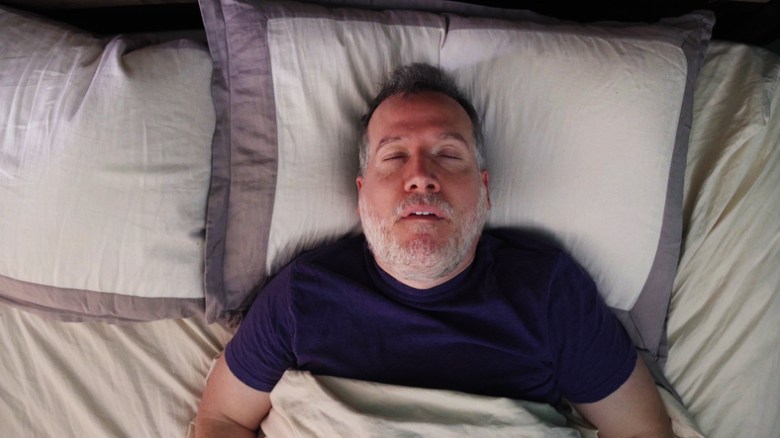15 Ways to Prevent and Relieve Back Pain



Almost everyone has back pain at some point in their life. But when it happens to you, you want relief … now. Here are 15 ways you can help prevent back pain, and make it better when it occurs.
1. Don’t coddle yourself.
Whether your back pain is excruciating or merely annoying, you probably won’t feel like doing much. But don’t take it easy for more than a day or two. Doing so can prolong and worsen pain. Instead, take a prescription or over-the-counter pain reliever (acetaminophen or ibuprofen) and start moving, says Daniel J. Mazanec, M.D., associate director of the Center for Spine Health at the Cleveland Clinic: “Low-impact activities, like walking or swimming, boost blood flow to your back muscles and help loosen them up.”
2. Avoid the urge to be a weekend warrior.
“In general, people who exercise regularly have less back pain than those who don’t,” says Mazanec. But bingeing on exercise over the weekend—to make up for everything you missed during the week—can backfire because your muscles aren’t primed for the activity. Ideally, you should go on a power walk daily. It’s the best prescription for a strong, problem-resistant spine.
3. Take a break.
Get up from the computer or couch and stretch every 30 minutes. Put your hands on your hips, look up at the ceiling and arch backward. Sitting for long periods without a break compresses your back’s disks, which are meant to cushion vertebrae.
4. Stay slim.
Maintaining a body mass index (BMI) in the normal range of 18.5 to 24.9 reduces your risk of back pain. “Being overweight causes wear and tear on your ankles, knees and hips that gets transferred to your spine because you limp or favor one side,” says Perry G. Fine, M.D., of the Pain Research Center at the University of Utah in Salt Lake City. It can also put excess stress on disks, ligaments and back joints, causing osteoarthritis of the spine.
5. Do Kegels.
Toning your pelvic-floor muscles does more than just prevent urinary incontinence. It strengthens your entire “inner cylinder,” starting with the floor. You’ll be supporting your uterus, bladder, bowel, on up to your abs and spinal muscles, says Kevin Carneiro, D.O., an associate professor of physical medicine and rehabilitation and medical director of UNC Hospitals Spine Center in Chapel Hill. “All of these muscles work in tandem.” To perform Kegels: Locate the targeted muscles by trying to stop the flow when urinating. Once you know how to flex and contract, hold those muscles for 5-second intervals five times in a row anytime during your day. Work up to 10-second contraction and relaxation intervals.
6. Get out of bed and onto a ball.
Sitting on a stability ball for 30 seconds or more each morning helps align ligaments around your disks, says Fine.
7. Quit it.
In case you need yet another reason to stop smoking, consider this: Nicotine constricts blood flow to spinal disks, causing them to age faster than normal.
8. Get a bra that fits.
Women with large breasts are more prone to back issues. Be sure you’re wearing the right-size bra, which can help distribute chest weight and prevent you from hunching over. In severe cases, breast reduction surgery, which typically removes 1 to 6 pounds from each side, may be beneficial.
9. Reconfigure your computer setup.
Looking down at a screen, what people often do when working on laptops, puts strain on neck and back muscles, says Carneiro. Your monitor should be at eye level, elbows and shoulders at 90 degrees. If you use a laptop, consider getting a separate keyboard to make these ergonomic adjustments.
10. Give your spine support.
Your lower back naturally curves inward, but most chairs cause it to round out, which can throw off alignment. “Cushioning your lumbar is the key to maintaining your spine’s neutral curvature,” says Mary Ann Wilmarth, D.P.T., former chief of physical therapy at Harvard University Health Services in Boston. Scoot all the way back in your chair with a roll of paper towels or a lumbar pillow wedged behind your waist. In a car or a public place stuff your coat behind you. “Once your low back is supported, your neck and upper back will stay in proper position,” Wilmarth says.
11. Find pressure points.
Studies indicate that acupuncture (the Chinese medicine technique of inserting thin needles into the skin) can help reduce back pain. If you shy away from needles, try shiatsu, which uses massage at acupuncture points. “I typically recommend massage or acupuncture to patients with muscles that won’t relax, even with physical therapy,” says Heidi Prather, D.O., attending physiatrist at the Hospital for Special Surgery in New York City. Find an acupuncturist or shiatsu therapist from the National Certification Commission for Acupuncture and Oriental Medicine at nccaom.org.
12. Stress less.
The neurochemicals that flood your system when you’re dealing with tough times can lead to emotional and physical pain. Reduce anxiety with regular exercise, a healthy diet, psychotherapy and, if necessary, prescription medication, such as Klonopin, Ativan, Prozac or Paxil.
13. Consider steroids.
When other attempts at relieving pain fail, steroid injections may provide relief. “A shot of dexamethasone or methylprednisolone in the back can decrease inflammation and keep you moving,” says Wellington Hsu, M.D., the director of research for the Musculoskeletal Institute at Northwestern Medicine. These medications can ease discomfort for months.
14. See the right doctor.
A trip to your internist can reassure you that your pain is nothing serious, like a malignancy, infection or fracture. Next step: “See a spine specialist to help pinpoint the problem and get the best treatment,” says Jared Greenberg, M.D., a physical medicine and rehabilitation specialist in Appleton, Wisconsin. “If in the end surgery is indeed necessary, you want to be able to look back and say ‘I did everything I could to avoid this,’” says Greenberg.
15. Work your core.
Strong abs are vital for a stable body, and, conversely, weak stomach muscles are often linked to back issues. The best exercise to practice regularly is the plank. Lie facedown on the ground and push yourself up on your forearms and toes to form a straight line with your back. Hold for 30 to 60 seconds. To make this move more difficult, push up onto your hands and straighten (but don’t lock) your arms. If possible, shift your weight to the right and raise your left arm to the sky, stacking your left foot on top of your right. Keep your hips up so your body forms a straight line from your ankles to your shoulders. Switch sides after 30 to 60 seconds.
© Meredith Operations Corporation. All rights reserved. Used with permission.

















